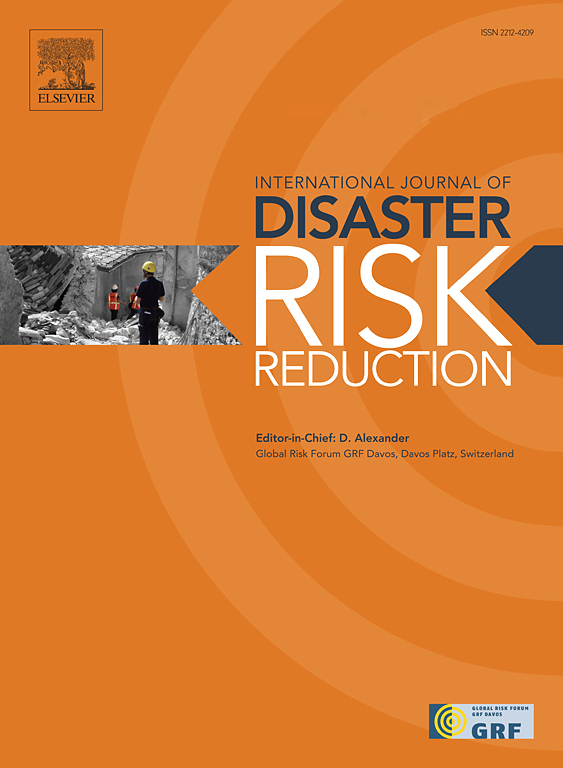A probabilistic modeling and simulation framework for power grid flood risk assessment
IF 4.2
1区 地球科学
Q1 GEOSCIENCES, MULTIDISCIPLINARY
International journal of disaster risk reduction
Pub Date : 2025-02-28
DOI:10.1016/j.ijdrr.2025.105353
引用次数: 0
Abstract
Floods can cause power outages with widespread impacts on socio-economic activities dependent on electricity for their functioning. Effective flood risk management requires comprehensive damage assessment, yet methodologies to estimate the entire range of expected damages are lacking. This paper presents a new modeling and simulation probabilistic framework for the assessment of damages to power grids exposed to floods. The framework combines modeling tools and approaches from engineering, economics and sociology, namely a flood inundation model to generate stochastic hazard scenarios, fragility curves to describe the stochastic failure process of components in the power grid conditioned to the hazard, a simulation-based model to analyze the power flow, and a socio-economic model to characterize the customers connected to the power grid. Consequently, the framework enables: (i) considering the stochastic magnitude and frequency of floods, (ii) evaluating the vulnerability of power grids components, (iii) estimating their spatio-temporal probabilities of failure, (iv) analyzing the cascading effects across power transmission and distribution networks, and (v) assessing the impact of power outages on the final customers and their likelihood. A synthetic case study is worked out by adapting the IEEE 14 power grid benchmark to the Italian context, proving how the framework allows the identification of the most critical components for the security of power supply during flooding. The outcomes from the implementation of the framework can support civil protection agencies and grid operators in the decision on pre- and post-disruption mitigation strategies, so to guarantee public safety, secure power supply and ensure financial well-being.
求助全文
约1分钟内获得全文
求助全文
来源期刊

International journal of disaster risk reduction
GEOSCIENCES, MULTIDISCIPLINARYMETEOROLOGY-METEOROLOGY & ATMOSPHERIC SCIENCES
CiteScore
8.70
自引率
18.00%
发文量
688
审稿时长
79 days
期刊介绍:
The International Journal of Disaster Risk Reduction (IJDRR) is the journal for researchers, policymakers and practitioners across diverse disciplines: earth sciences and their implications; environmental sciences; engineering; urban studies; geography; and the social sciences. IJDRR publishes fundamental and applied research, critical reviews, policy papers and case studies with a particular focus on multi-disciplinary research that aims to reduce the impact of natural, technological, social and intentional disasters. IJDRR stimulates exchange of ideas and knowledge transfer on disaster research, mitigation, adaptation, prevention and risk reduction at all geographical scales: local, national and international.
Key topics:-
-multifaceted disaster and cascading disasters
-the development of disaster risk reduction strategies and techniques
-discussion and development of effective warning and educational systems for risk management at all levels
-disasters associated with climate change
-vulnerability analysis and vulnerability trends
-emerging risks
-resilience against disasters.
The journal particularly encourages papers that approach risk from a multi-disciplinary perspective.
 求助内容:
求助内容: 应助结果提醒方式:
应助结果提醒方式:


